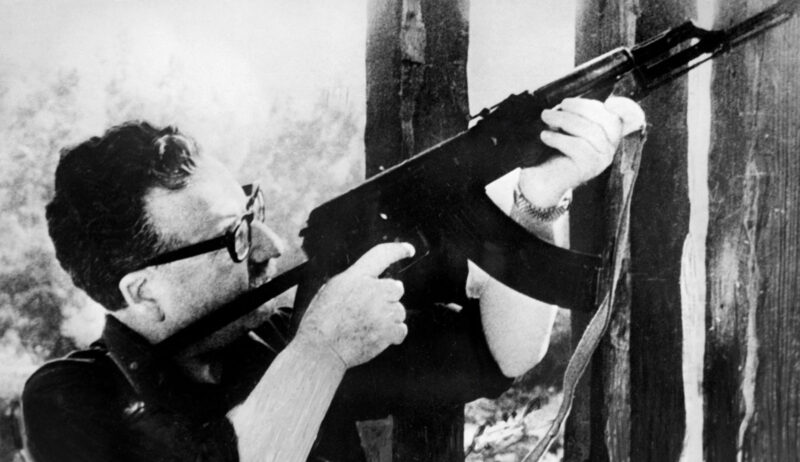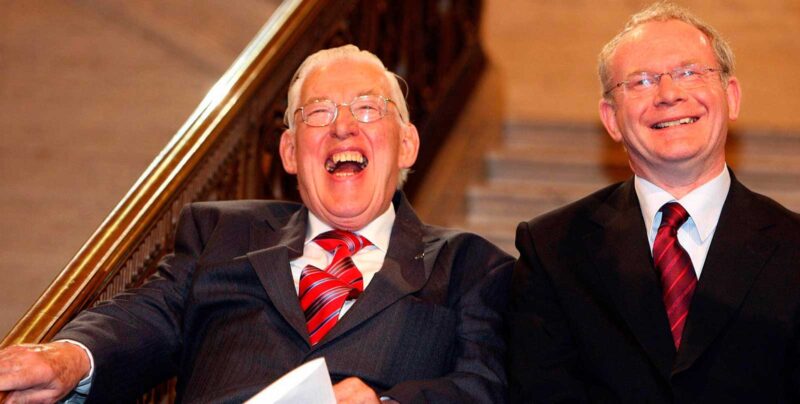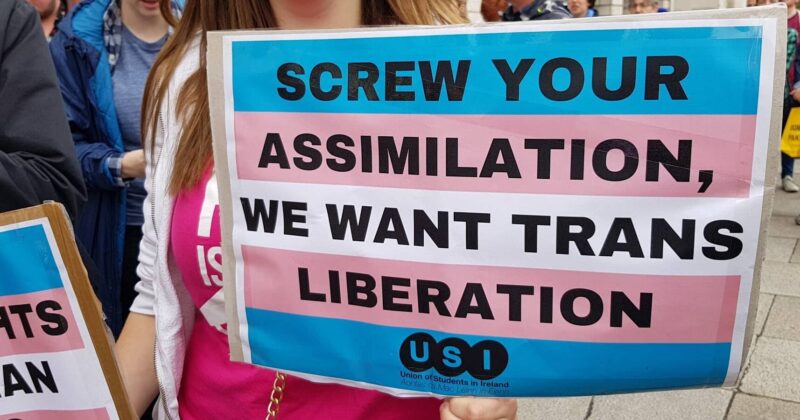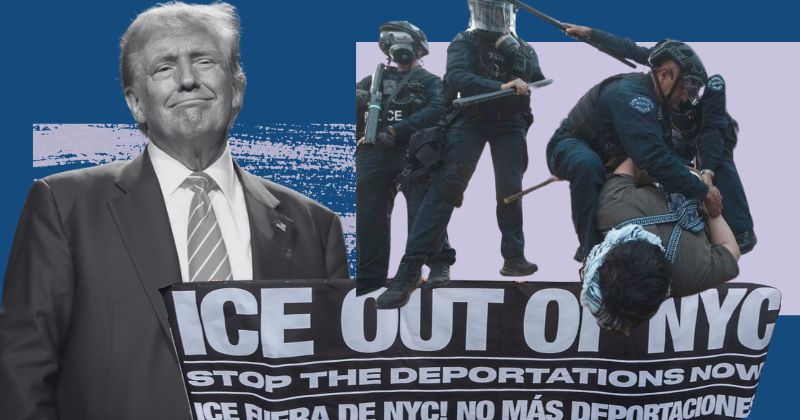1848 When revolution swept Europe
By Simon Hardy
The year 2011 is a year of revolution. Uprisings sweep across the Middle East as rebellion against kings and dictators move from one country to another. And in Europe the crisis is spreading upheaval from Greece to Spain and beyond. This article looks at another “mad year” and ask what lessons the Great Revolutions of 1848 have for workers and youth fighting today
The year 1848 was a turning point in European history. Fifty years after the French revolution Europe was still in a state of transition from one form of society to another. The old feudal system, which had dominated Europe, was passing away, being supplanted by capitalism – in very few places had it been accomplished thoroughly and completely.
Even in France, famous for the Great Revolution of 1789 that had beheaded the king and ushered in the modern age, the capitalist class had still not established a modern republic.
France was was still a majority peasant country. Despite a revolution in 1830 which drove out the Bourbons who had been restored to the throne in 1815, France still had a constitutional monarch, Louis Phillipe. His ministers ruled for the highest echelons of the financial bourgeoisie, the bankers.
The 19th century historian de Tocqueville described Europe as being like a “volcano”. Contradictions were growing between the still surviving remnants of the old society, – the absolutist monarchy and nobility – and the newer classes, which were destined to make up the capitalist society that we know today.
Classes
These were the middle classes, growing richer and demanding more power and say in how society was run, and the working class – which had expanded massively since the turn of the century.
The young working class was concentrated in a few key cities, like Paris, London, Vienna, Manchester and Milan. They lived in slum tenements as the infrastructure of the cities had not been able to catch up with the massive growth of the population.
In 1845-47 a severe economic crisis hit the continent. Like the great crisis of 2007-08 it began in the finance sector. A banking crisis in England, caused by the collapse of the railway boom, and a steep decline in the price of cereals in France, reverberated across the economy, causing growing unemployment.
In many countries working class resistance broke out; massive strikes and pickets were organised outside factories. All the while the monarchies backed the bankers and the landowners against the demands of the people.
On 12 January 1848 the volcano erupted – beginning on the island of Sicily. The population rose up against the Bourbon king. They successfully established an independent state for 16 months, adopting a constitution which called for the unification of Italy.
This was opposed by the many feudal monarchs who ruled over various parts of what would become Italy. Sicily was an important breakthrough for the struggle for democracy. But the next revolutions would strike at the heart of Europe itself – first Paris and then across the German states.
Third French revolution
The February revolution in France, a mass, popular movement composed of the various disenfranchised classes, rose up and overthrew Louis Phillipe and his band of corrupt financiers that had been bleeding France dry. The second republic was born.
The newly installed provisional government was dominated by bourgeois Republicans (capitalists and various middle class leaders), along with a minority of reformist socialists from the working class, led by Louis Blanc. It organised elections for a constituent assembly in April. However the provisional government was weak, divided between the different classes and unwilling to rule in the interests of the working class which had been such a crucial force in bringing it to power.
Karl Marx described it at the time: “The Provisional Government which emerged from the February barricades necessarily mirrored in its composition the different parties which shared in the victory. It could not be anything but a compromise between the different classes which together had overturned the July throne, but whose interests were mutually antagonistic. The great majority of its members consisted of representatives of the bourgeoisie.”
The provisional government made the cardinal error of trying to appease the financier sections of the capitalist class by refusing to cancel the enormous and growing debt of the now departed king. To pay this debt they imposed a new tax on the peasants.
Fobbed off
Now the revolution changed phase. In the face of mass unemployment caused by the crisis, the working class now demanded that the constituent assembly pass a law guaranteeing the right to work. Under their pressure it was included in the first draft of the constitution.
Louis Blanc, the most influential reformist socialist of the period, advocated the creation of nationally owned factories to absorb the unemployed and begin a gradual replacement of private capital by social production. But all the provisional government would provide funds for was a network of “National Workshops”. Meanwhile it fobbed off Louis Blanc and the workers by creating a commission which met in the Luxembourg Place to “consider solutions to the social question.”
Marx called the right to work: “the first clumsy formula wherein the revolutionary demands of the proletariat are summarised. It was transformed into the droit à l’assistance, the right to public relief, and what modern state does not feed its paupers in some form or other? The right to work is, in the bourgeois sense, an absurdity, a miserable, pious wish.
“But behind the right to work stands the power over capital; behind the power over capital, the appropriation of the means of production, their subjection to the associated working class, and therefore the abolition of wage labour, of capital, and of their mutual relations. Behind the ‘right to work’ stood the June insurrection.”
Here Marx describes what Leon Trotsky later called a transitional demand, one that connects the needs of the masses to the struggle to overthrow capitalist ownership of production.
By May the National Workshops were employing 100,000 workers. They were basically public work schemes –aimed at providing an income for the unemployed whilst beginning the task of modernising the medieval cities. The conservatives, the Party of Order, attacked the workshops as places where idlers were paid for doing nothing of real value and where they listened to seditious speeches by revolutionaries and communists.
They rallied support amongst the newly enfranchised male peasants by claiming they were paying for these idlers in Paris and the other large cities. Not for the last time in history a revolution would generate a counter-revolutionary reaction which would soon make a bid for power.
The Party of Order expelled the socialist deputies from the government and within months moved to attack the working class in Paris by closing down the National Workshops. The working class, politicised and radicalised by its experiences in February, was not prepared to meekly accept these attacks.
To arms!
On 22 June they set up barricades in the working class districts – 50,000 workers, an army of rebellion, began to move on the centre of Paris. Never before had such a mass of workers taken up arms to defend themselves and their rights. This was truly a momentous event in the history of the struggle of the working class. The Assembly appointed General Louis-Eugène Cavaignac as dictator. Fresh from bloody victories in colonising Algeria, he organised a mixed force of regular soldiers and press-ganged criminals into a 130,000 strong army.
The workers’ uprising was drowned in blood, after three days of ferocious barricade fighting. Never had the working class organised such a sustained battle. They fought heroically under the red flag in defence of the “Social Republic”. A historic chasm opened between the workers’ movement and the bourgeois republicans. Around 1,500 workers were killed and 15,000 political prisoners deported to the colonies.
Marx called it “the tremendous insurrection in which the first great battle was fought between the two classes that split modern society”. He contrasted the June rising with the February Revolution:
“The February revolution was the nice revolution, the revolution of universal sympathies, because the contradictions which erupted in it against the monarchy were still undeveloped and peacefully dormant, because the social struggle which formed their background had only achieved an ephemeral existence, an existence in phrases, in words. The June revolution is the ugly revolution, the nasty revolution, because the phrases have given place to the real thing.”
He drew out the class politics implicit in the events:
“In place of the demands, exuberant in form but still limited and even bourgeois in content, whose concession the proletariat wanted to wring from the February Republic, there appeared the bold slogan of revolutionary struggle: Overthrow of the bourgeoisie! Dictatorship of the working class!”
The June Days in Paris proved also to be a turning point in the 1848 revolutions right across Europe. After this the forces of reaction, previously on the defensive and making concessions in the form of constituent assemblies, began a steady counter-attack – just as the Arab rulers are doing in the Middle East today.
Counter-revolution
In France the Party of Order now gained total control of the constituent assembly and severely cut back on the right to vote. By December new elections were held and Louis Napoleon, nephew of Napoleon Bonaparte was elected President of the Republic.
He posed as a friend of the workers against the bourgeois republicans, promising to restore universal suffrage, but he also pledged to the peasants that he would keep taxes low and the Parisian reds in order.
By 1851 Bonaparte consolidated his rule and pushed through a referendum to appoint him Emperor. Again the peasantry voted to support him, a vote against the hated tax collectors and rich capitalists that they despised. The Catholic church too supported him because he had sent French troops to restore the Pope to power in Rome against the Italian Republicans led by Giuseppe Garibaldi.
The peasantry had become a conservative force, with its small farms secured by the Great French Revolution, its outlook narrowed to the village, with the parish priest the main source of opinions about the outside world. Still a large majority of the population, using universal suffrage, the bourgeois class could use them as an electoral steamroller for reaction.
The army too was mostly made up of peasants and could could be sent into the cities to shoot workers, especially when their heads had been filled with tales of the ‘red workers betraying the nation’.
Bonapartism
It was this event from which Marx theorised the phenomenon of Bonapartism, when society is so divided and convulsed by open class warfare, with neither class able to completely take power securely and rule in its interest, that a “strong man” must appear. This Bonaparte balances between the classes and seeks to rise above them, adopting dictatorial forms of rule.
Louis Napoleon was able to do this by mobilising the peasantry against the capitalist republicans. The peasants marched to the polls under the slogans, said Marx, “No more taxes, down with the rich, down with the republic, long live the emperor! Behind the emperor was hidden the peasant war. The republic that they voted down was the republic of the rich”. But once in power the emperor defended the capitalists against the workers and indeed the bankers against the peasantry.
Bonapartism is a political phenomenon that capitalism would see again and again, as the working class struggle makes society unstable. But instead of overthrowing the capitalists, a lack of a revolutionary leadership leads to a dictatorship, usually by an officer in the army (Chiang Kai Shek in China, Franco in Spain, Suharto in Indonesia, Pinochet in Chile, etc).
Revolution spreads to Germany…
In 1848 Germany was much less industrially developed than France, with a large peasantry and small capitalist and working classes. When the popular struggle broke out, it was a result of two key issues.
The middle classes and sections of the capitalist class were propelled into action against the current political order – Germany was divided into 39 states, united in a loose confederation.
The 39 states each represented a German monarch – a King, a Prince, an Archduke, etc. The newly developed bourgeois class demanded universal suffrage (men only!) the right to bear arms and for a national parliament in which all Germans would be represented.
Just as events in Tunisia spurred on the Middle Eastern masses today, the French events inspired the people of Berlin and other large German cities to launch a wave of uprisings. The revolutionaries convened an emergency meeting – the Frankfurt National Assembly.
This revealed the key role that the radical intelligentsia had played in the revolution. When the Assembly met, it was packed with professors, teachers and well-educated men with degrees (quite rare for 1848). Because it was dominated by men of position who had a lot to lose, it took no serious measures to seize power and was eventually dispersed in May 1849 by Prussian soldiers. The power of the Prussian aristocracy and the military was re-established.
In Austria, when news broke of the revolution in Paris, masses of people rose up in Vienna. University students mounted barricades, took over the inner city, and opened the gates to columns of workers from the suburbs.
The Emperor Ferdinand’s chief minister, the arch reactionary Prince Metternich was forced to flee to England. All eyes turned to the Frankfurt National Assembly to give a lead – none came. Then, after a revolt by the Hungarians against the Habsburg regime, on 6 October a new uprising occurred in Vienna. It took three days for General Windischgrätz to repress it brutally. The conservative monarchy restored its power.
The revolutions of 1848 showed that capitalist crises led to revolution, and that revolution could spread across a continent. The events revealed the key role of the working class in the revolution.
And they showed another thing too. The working class was starting to find a political voice of its own. The year 1848 was a key date in the birth of communism.
Marx and the Communists
The struggles in the German speaking lands saw the introduction to the political scene of Karl Marx, editor of the Neue Rheinische Zeitung – a paper that he used to fight for the ideas of revolutionary communism.
Marx’s comrade Frederick Engels described the scene:
“On the outbreak of the February Revolution, the German ‘Communist Party’, as we called it, consisted only of a small core, the Communist League, which was organised as a secret propaganda society.
“The League was secret only because at that time no freedom of association or assembly existed in Germany. Besides the workers’ associations abroad, from which it obtained recruits, it had about thirty communities, or sections, in the country itself and, in addition, individual members in many places.
“This inconsiderable fighting force, however, possessed a leader, Marx, to whom all willingly subordinated themselves, a leader of the first rank, and, thanks to him, a programme of principles and tactics that still has full validity today: the Communist Manifesto.”
Engels himself spent much of 1848-49 taking part in the insurrection at Elberfeld and in the fighting in Baden. By the time that the counter-revolution had regained control, the Neue Rheinische Zeitung was suppressed, but its final headlines carried a ringing call from Marx to carry on the struggle:
“In bidding you farewell, the editors of the Neue Rheinische Zeitung thank you for the sympathy you have shown them. Their last word everywhere and always will be: emancipation of the working class!”
All across Europe the absolutist monarchies had been shaken to their core, either overthrown or kicked off their thrones for a brief period of democratic rule. Although many of the monarchs had returned, they knew that their power was no longer absolute.
The class forces welling up beneath them were set on their defeat and it was only a matter of time. The task now was for the revolutionaries to understand what had happened in the revolution and begin the political preparations for the revolutionary struggles they knew were coming.
Marx and Engels were exiled to Britain. In London Marx addressed the central committee of the Communist League with an analysis of the failures of the revolutions, caused by a mixture of the fear that the capitalists felt for their own workers and the brutal bloodshed by the generals and monarchs.
Marx outlined a strategy that would see the working class, instead of simply letting the capitalists take power, fight for power themselves. “While the democratic petty bourgeois want to bring the revolution to an end as quickly as possible, achieving at most the aims already mentioned, it is our interest and our task to make the revolution permanent until all the more or less propertied classes have been driven from their ruling positions, until the proletariat has conquered state power and until the association of the proletarians has progressed sufficiently far – not only in one country but in all the leading countries of the world – that competition between the proletarians of these countries ceases and at least the decisive forces of production are concentrated in the hands of the workers.
“Our concern cannot simply be to modify private property, but to abolish it, not to hush up class antagonisms but to abolish classes, not to improve the existing society but to found a new one.”
Permanent revolution
It was this strategy which Trotsky later developed into the strategy of “permanent revolution”, taking the phrase from the address to the Communist League. In underdeveloped countries like Germany in 1848 and Russia in 1917, the capitalist class was too weak to lead “its own” democratic revolution to victory against the monarchy. But there was already a small, but strong and concentrated working class; the capitalists were too afraid to mobilise its mortal enemy to assist it in its own revolution.
The working class would have to come to the head of the democratic masses and lead the democratic revolution to victory. But in taking the power, the workers would then need to establish their own system in place of capitalism.
Just as Lenin and Trotsky learned from 1848 when they devised the strategy that led to victory in 1917, so Arab workers today can learn from 1848 in the struggle to make their revolutions permanent.
The experience of the revolutionary struggles across Europe was essential for the development of revolutionary socialist politics. The capitalist class was by 1848 a shadow of its previous revolutionary self, too afraid of the working class to fight for serious change, easily defeated by monarchies, their progressive role had been played out.
Now the working class would have to emerge onto the political scene, with its own banner, its own programme and its own parties to fight for power and an end to all forms of exploitation.







